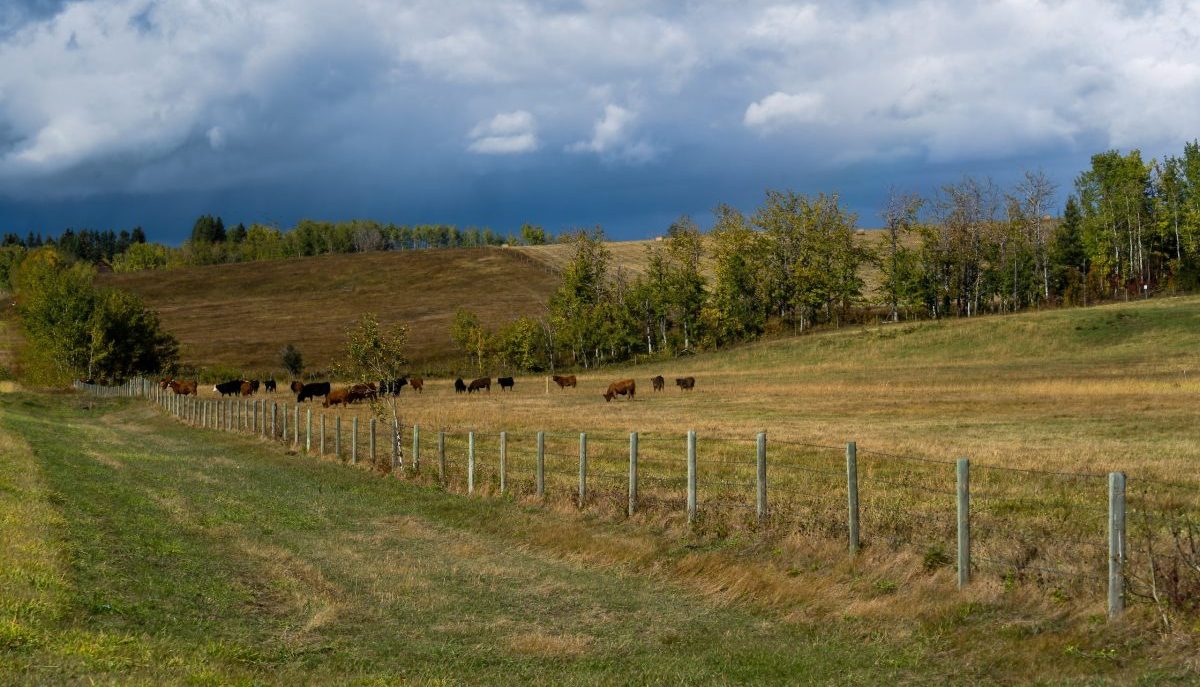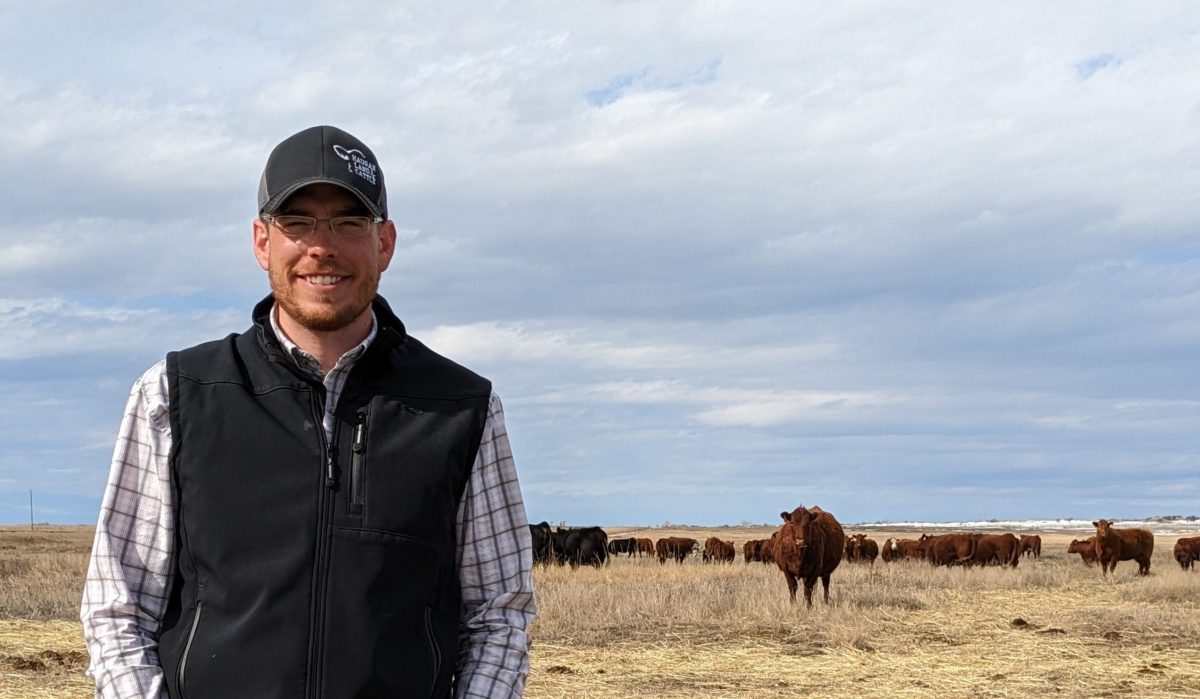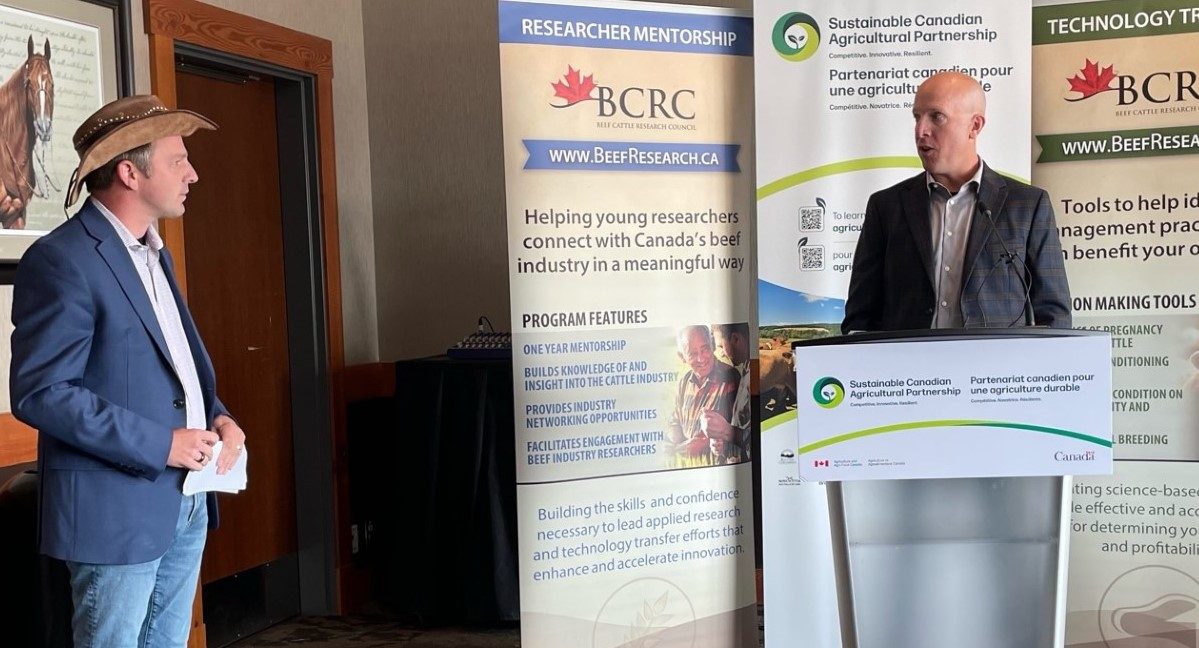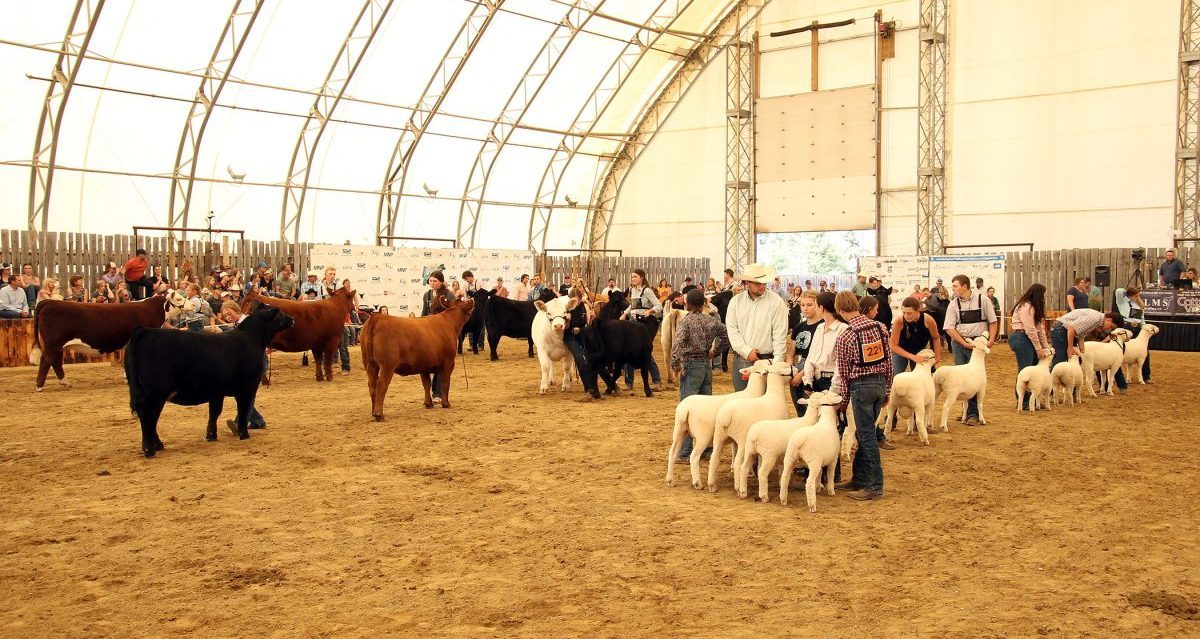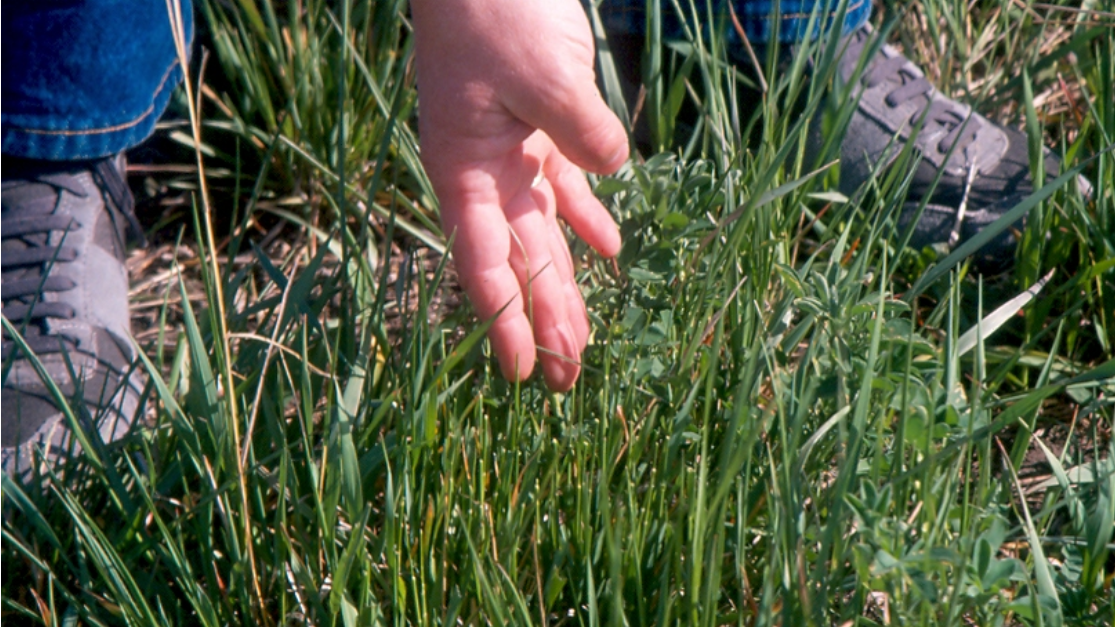AB Direct - Steers
Rail: 492.00-493.50 FOB feedlot (last week)
AB Direct - Heifers
Rail: 492.00-493.50 FOB feedlot (last week)
US Trade- Steers
Rail: 355.00-363.00 (IA, NE) last week
US Trade - Heifers
Rail: 355.00-363.00 (IA, NE) last week
Canadian Dollar
0.19
What We’re Reading | Canada’s cattle ranchers rebrand as grassland protectors to counter beef’s bad rap
By Paula Duhatschek, CBC Calgary Inside an agricultural exhibition building at the Calgary Stampede, kids practise rotating cattle through different areas of pasture, earning “carbon points” as they go if they can avoid under- or overgrazing the land. They’re playing Guardians of the Grasslands, a computer game that was produced with funding from a government grant program, the charitable arm…
ABP strongly opposed to UK accession to CPTPP
Alberta Beef Producers (ABP) is standing with the Canadian Pork Council, the Canadian Cattle Association, and the Canadian Meat Council in opposition to the Government of Canada’s agreement to include the United Kingdom (UK) in the Comprehensive and Progressive Agreement for Trans-Pacific Partnership (CPTPP). Under current trade agreements, the UK does not accept Canada’s animal…
Get ‘The Dish’ on perennial risk management at AgSmart
Producers can get The Dish on the challenges and opportunities of perennial risk management August 1 at AgSmart in Olds, AB. The Dish is a special informational event hosted by Agriculture Financial Services (AFSC) and AgSmart. Attendees will gain insights into the opportunities and challenges related to perennial risk management in both Canada and the…
Feeder Associations of Alberta elects new chair and vice chair
Congratulations to Alberta Beef Producers delegates George L’Heureux and Jim Bowhay on being elected the new Chair and Vice Chair, respectively, of the Feeder Associations of Alberta (FAA). L’Heureux, who ranches near Lac La Biche, is an ABP delegate for the Northeast Zone and sits on the Board of Directors. Bowhay, a delegate for the…
New year, new chair, new perspective
Stepping into a leadership role in any organization these days is no small challenge. Doing so in a business more than a century old, steeped in tradition and lifestyle, while facing modern challenges of economics and diverse views, could be extra daunting. But it is a role Brodie Haugan has thoughtfully taken on as the…
Temporary livestock water assistance announced for Alberta producers
Alberta Environment and Protected Areas (EPA) is offering temporary livestock water assistance for producers facing water shortages due to drought conditions. This program is available to any livestock and poultry producers in urgent need of water. If you require help to find an alternative water source, contact your EPA district office or call the Water…
Heading to CBIC? Make it an Alberta adventure to remember!
Alberta Beef Producers is looking forward to welcoming guests from across the country to this year’s Canadian Beef Industry Conference in Calgary, August 14-17. For those who want to explore more of Alberta during the conference, book your spot on the Welcome to Alberta tour, hosted by ABP, on Monday, August 14. But hurry –…
Canfax Weekly Article | Report for the week of July 17, 2023
Since the start of January, fed prices have rallied 33%, the third-largest first half of the year price rally over the past 50 years. The fed market has just recently exhausted its upward climb, as prices have declined around $8/cwt over the past three weeks. The last time fed prices declined for three consecutive weeks…
What We’re Reading | Alberta’s iconic cattle ranches face critical moment as two-year drought continues
By Kate Helmore, The Globe and Mail Rachel Herbert spent the past few days fixing up her water pump. The water in her well was barely reaching it. The surrounding streams had slowed to a trickle, or were bone dry. Her cattle ranch, Trail’s End Beef, is located in Nanton, Alta., a community that has received a…
$12 million federal investment to drive environmental, economic and social sustainability in Canada’s beef sector
The Beef Cattle Research Council (BCRC) is welcoming more than $12 million in funding from the Government of Canada for Canada’s Beef and Forage AgriScience Cluster under the Sustainable Canadian Agricultural Partnership – AgriScience Program. Francis Drouin, Parliamentary Secretary to the Minister of Agriculture and Agri-Food, made the funding announcement on July 12 while attending…
4-H Alberta projects – 2023 highlights
4-H members around the province have many opportunities to participate in 4-H Alberta events. The 4-H Alberta Provincial Carcass Competition is a relatively new competition moving into its fifth year of completion. The program has grown from approximately 40 members to more than 120 members competing in this great initiative that focuses on the carcass…
Plan now to secure winter feed supplies
ABP is excited to feature the writings of Barry Yaremcio, ruminant nutritionist and production management consultant. Barry is a trusted voice in cattle nutrition and forage production, operating Yaremcio Ag Consulting Ltd. This article was originally published on his BYOB Blog, which can be found on his website. In many areas, soil moisture was lacking…



